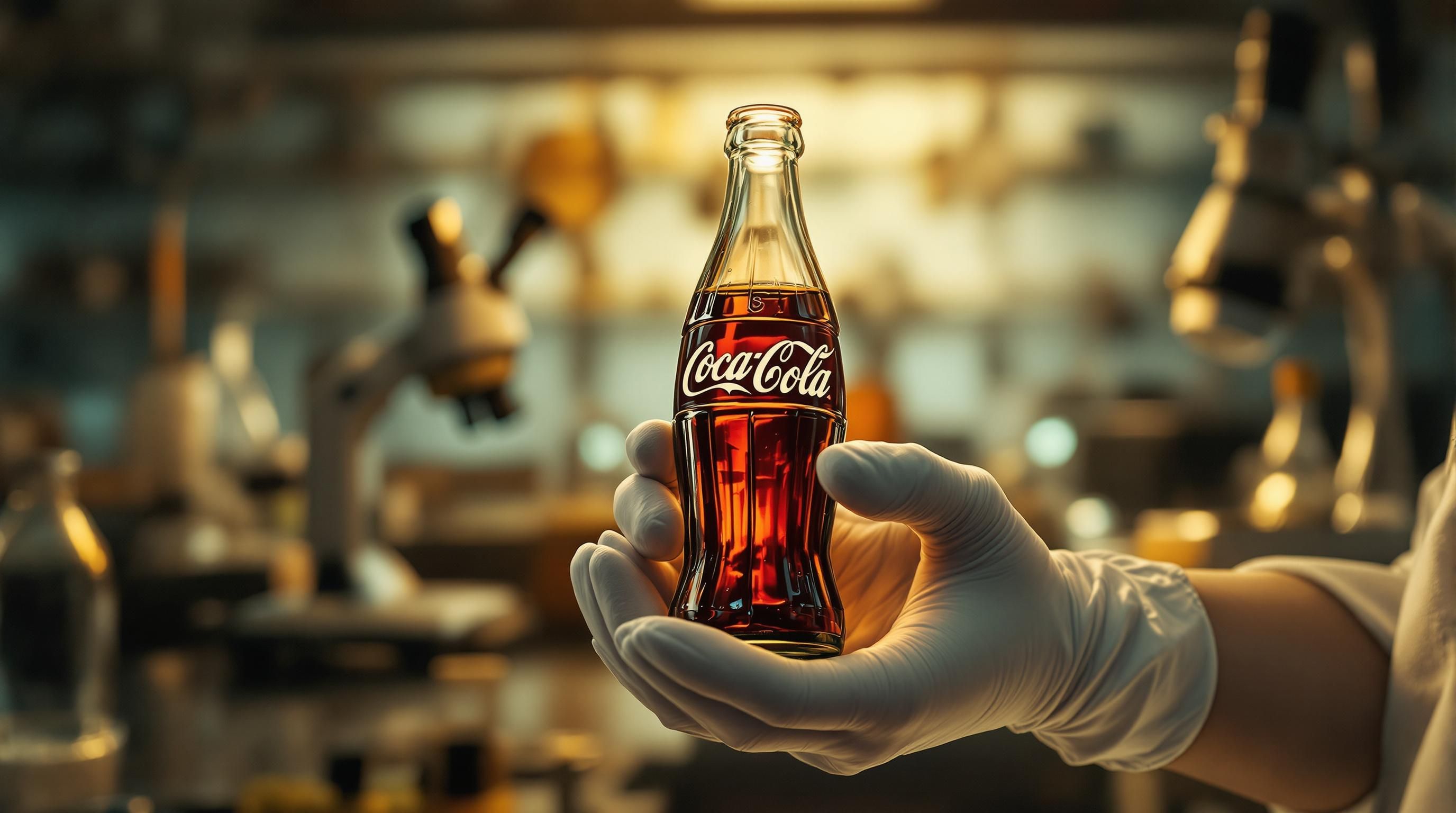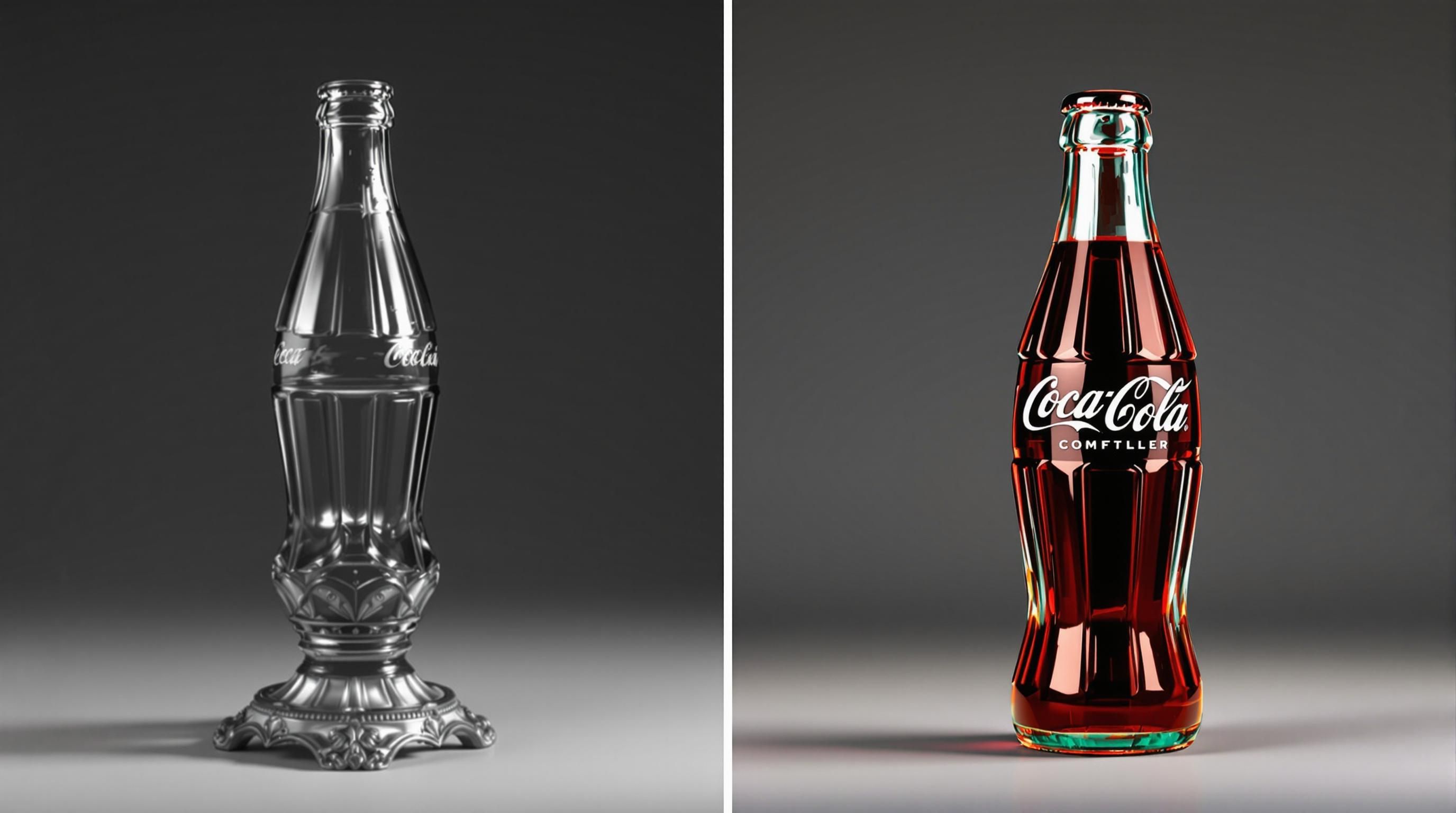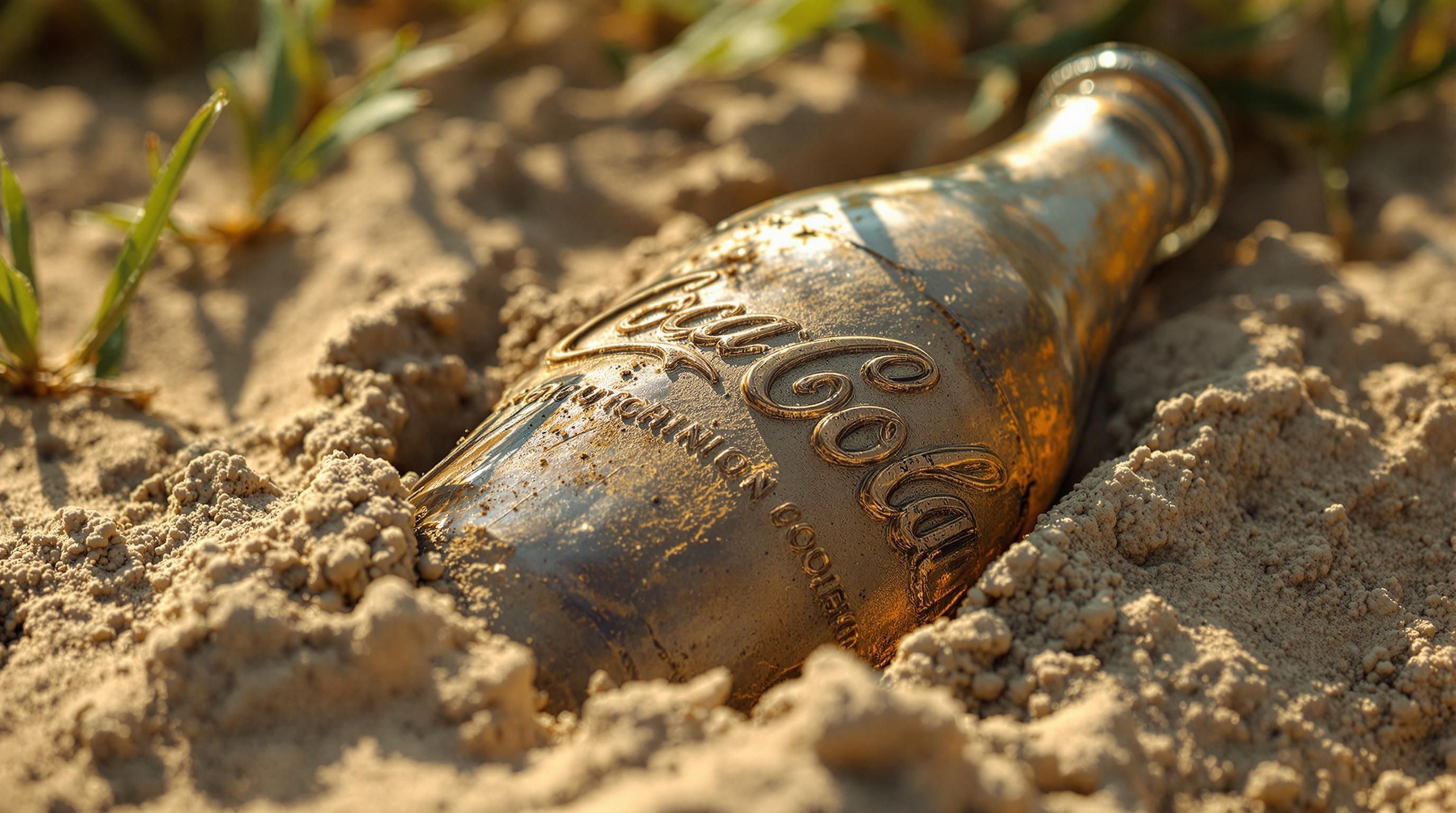Antique Coca-Cola Bottle Values: Collector’s Price Guide for Rare Finds
For collectors and enthusiasts alike, vintage Coca-Cola bottles represent a fascinating piece of American history. From the earliest Hutchinson bottles to commemorative editions, these iconic glass vessels can range in value from a few dollars to several thousand, depending on age, rarity, and condition.
This comprehensive guide will help you identify valuable Coca-Cola bottles in your collection, understand what factors affect their worth, and learn current market prices for the most sought-after examples.
Coca-Cola Bottle Market Highlights
Table of Contents
- Evolution of Coca-Cola Bottles
- Most Valuable Coca-Cola Bottles
- Factors Affecting Bottle Value
- How to Identify Your Bottle’s Era
- Current Market Values
- Where to Sell Vintage Coca-Cola Bottles
- Authentication Tips
- Common Questions
- Resources for Collectors
Evolution of Coca-Cola Bottles
History of Coca-Cola Bottle Designs
- 1886-1899
Hutchinson Bottles
The earliest Coca-Cola bottles featuring a distinctive metal stopper mechanism. These extremely rare bottles can fetch $1,000-$4,000+ depending on condition and embossing. - 1900-1915
Straight-Sided Bottles
Before the iconic contour shape, Coca-Cola was sold in straight-sided bottles produced by various local bottlers. Values range from $25-$400 depending on city, color, and condition. - 1915-1923
Early Contour Bottles
The first “hobble skirt” contour bottle design with the patent date “Nov. 16, 1915” embossed on the bottle. Authentic examples typically range from $50-$200. - 1923-1937
Christmas Coca-Cola Bottles
Modified contour bottles with the “Dec. 25, 1923” patent date. Most of these common bottles sell for $10-$30, though rare variants can command more. - 1938-1950s
Mid-Century Bottles
Bottles from this period often have city names embossed on the bottom. Values typically range from $5-$25 for common examples. - 1960s-Present
Modern & Commemorative Bottles
Limited editions, commemorative bottles, and special releases vary widely in value, from a few dollars to several hundred for rare examples.
Most Valuable Coca-Cola Bottles
Record-Breaking Coca-Cola Bottle Values
Notable high-value bottles that have sold at auction
</tbody>
</table>
Factors Affecting Bottle Value
Age and Rarity
Older bottles, particularly those from before 1920, are generally more valuable. The scarcity of a particular style, color, or bottling location significantly impacts value.
Condition
As with most collectibles, condition is paramount. Chips, cracks, heavy wear, or significant fading will substantially reduce value.
Color Variations
While most Coca-Cola bottles are the familiar green or clear glass, unusual colors like amber, blue, or purple command premium prices.
Embossing and City Marks
Bottles from smaller towns or cities with limited production runs are more collectible than those from major metropolitan areas.
Experimental Designs
Test designs, prototype bottles, and production errors can be exceptionally valuable to serious collectors.
Commemorative Significance
Bottles produced for special occasions, anniversaries, or with unique historical significance often have higher values.
Coca-Cola Bottle Condition Assessment
Check applicable items to evaluate your bottle's condition and potential value
- No chips, cracks or repairs
- Original label intact (if applicable)
- Clear, legible embossing
- Original contents (unopened)
- No significant wear or scratches
- Original packaging or box included
- From small town or limited distribution
- Rare color variation
How to Identify Your Bottle's Era

Patent Dates
One of the easiest ways to date a Coca-Cola bottle is by looking for the patent date embossed on the glass:
- “Nov. 16, 1915” - First contour bottle patent (1915-1923)
- “Dec. 25, 1923” - Christmas Coke bottle, second design patent (1923-1937)
- “Pat. D-105529” - Patent number from 1937-1951
- “U.S. Patent Office / Coca-Cola Ltd.” - Later bottles after 1951
Base Markings
The bottom of the bottle often contains valuable information:
- City/state of the bottler
- Mold numbers
- Glass manufacturer marks
- Year codes (especially after the 1950s)
Bottle Shape
- Hutchinson bottles: Straight-sided with a bulbous neck
- Straight-sided bottles: Cylindrical with minimal contour
- Early contour bottles: Less pronounced curves than later versions
- Classic contour bottles: The iconic “hobble skirt” design
Script and Logo Evolution
The Coca-Cola script logo has evolved subtly over time, with variations in the placement and style of the trademark ™ or ® symbols.
Current Market Values
Average Coca-Cola Bottle Values
Current market values as of 2023
| Category | Price | Notes |
|---|---|---|
| Prototype Coca-Cola Bottle | $240,000 | Rare design prototype that was never mass-produced, sold at auction in 2011 |
| Hutchinson Coca-Cola Bottle | $1,000-$4,000+ | The earliest style, extremely rare with few surviving examples |
| Amber Straight-Sided Bottles | $400-$1,000 | Uncommon color variation from early bottling era |
| Blue/Green Canadian Straight-Side | $150-$300 | Distinctive color variation from Canadian bottlers |
| Thai Coca-Cola ACL Bottle | $100-$300 | Foreign bottles with Applied Color Label from Thailand |
</tbody>
</table>
It’s important to note that values can fluctuate based on collector interest, condition, and other market factors. Checking recent sales on platforms like eBay can provide the most current pricing information.
Where to Sell Vintage Coca-Cola Bottles
Online Marketplaces
- eBay: The largest marketplace for Coca-Cola bottles with a wide audience
- Etsy: Particularly good for higher-end or rare specimens
- Facebook Marketplace: Useful for local sales to avoid shipping fragile glass
Specialist Dealers
- Antique stores: Many specialize in advertising memorabilia
- Bottle shows: Events where collectors gather to buy, sell and trade
- Auction houses: For especially rare or valuable specimens
Collector Communities
- The Coca-Cola Collectors Club: Connect with dedicated collectors
- Bottle collector forums: Exchange information and make private sales
When selling, provide clear photographs that highlight key features like patent dates, city names, and any unique characteristics. Document the condition honestly, noting any flaws.

Authentication Tips
Watch for Reproductions
In 1989, Coca-Cola reproduced the 1915 and 1923 patent bottles for promotional purposes. These reproduction bottles can be identified by:
- Much lighter weight glass
- “Reproduction” or “Not for Sale” markings
- More uniform, machine-perfect appearance
- Lack of wear consistent with age
Examining Glass Quality
Authentic older bottles typically have:
- Tiny bubbles or imperfections in the glass
- Slightly asymmetrical elements
- Signs of mold seams appropriate to the era
- Appropriate wear on the base from use
Color Authentication
Beware of artificially colored bottles. Authentic colored Coca-Cola bottles have the color mixed into the glass itself, not applied as a coating.
Dating Bottle Caps
If your bottle still has its original cap, this can help with dating:
- Cork-lined caps were used until the 1960s
- Plastic-lined caps came later
- Design elements on the cap should match the bottle’s era
Common Questions About Coca-Cola Bottle Values
Are old Coca-Cola bottles worth anything?
What is the most expensive bottle of Coke ever sold?
How can I tell if my Coca-Cola bottle is valuable?
To determine if your Coca-Cola bottle is valuable, check these key factors:
- Age - Bottles from before 1920 are generally more valuable
- Patent date - Look for dates like “Nov. 16, 1915” or “Dec. 25, 1923”
- Bottle shape - Hutchinson and straight-sided bottles are worth more than contour bottles
- Color - Amber, blue, or unusual colors are more valuable than standard green
- City markings - Bottles from smaller towns are typically more collectible
- Condition - Mint condition bottles without chips or cracks command higher prices
- Rarity - Limited editions, test designs, or bottles with manufacturing errors can be valuable
Compare your bottle with recent sales on eBay or consult a Coca-Cola collectibles guide for more specific valuations.
Are Coca-Cola bottles from the 1970s and 1980s valuable?
How do I identify a Hutchinson Coca-Cola bottle?
Hutchinson Coca-Cola bottles (1886-1899) are the earliest and most valuable type. To identify one:
- Look for a straight-sided bottle with a bulbous neck
- Check for a distinctive inward-curving middle section where the wire stopper mechanism was attached
- Search for “Coca-Cola” or “Coke” embossed directly on the glass (no paper label)
- Examine the bottom for city markings from early bottling plants
- Note the heavier, often bubbled glass typical of the era
True Hutchinson Coca-Cola bottles are extremely rare and valuable. If you believe you have one, consider professional authentication as reproductions are common.
Where is the best place to sell valuable Coca-Cola bottles?
For selling valuable Coca-Cola bottles, consider these options:
- Specialty auction houses like Heritage Auctions for high-value specimens
- eBay for reaching the widest audience of collectors
- Etsy for premium or rare bottles
- The Coca-Cola Collectors Club to connect with serious collectors
- Bottle collector shows and conventions for face-to-face sales
- Antique dealers who specialize in advertising memorabilia
For bottles worth over $500, obtaining a professional appraisal before selling is recommended to ensure you receive fair market value.
How do I date my Coca-Cola bottle?
To date your Coca-Cola bottle, look for these key indicators:
Patent dates embossed on the bottle:
- “Nov. 16, 1915” (1915-1923)
- “Dec. 25, 1923” (1923-1937)
- “Pat. D-105529” (1937-1951)
Bottle shape:
- Hutchinson style (1886-1899)
- Straight-sided (1900-1915)
- Early contour/hobbleskirt (post-1915)
Base markings:
- City/town names
- Manufacturer codes
- Date codes (especially bottles from the 1950s onward)
Script style and trademark symbols which evolved over time
If your bottle has no patent date but has a city name and “Coca-Cola Bottling Co.” embossed on it, it’s likely a straight-sided bottle from 1900-1915.
Who collects Coca-Cola memorabilia?
Coca-Cola memorabilia is collected by a diverse group of enthusiasts, including:
- Members of The Coca-Cola Collectors Club, an international organization dedicated to collecting Coca-Cola items
- Antique bottle collectors who focus on glass bottles and containers
- Advertising memorabilia collectors interested in the brand’s iconic marketing
- Nostalgia collectors focusing on specific eras like the 1950s
- Interior decorators using vintage Coca-Cola items for themed spaces
- Museums and corporate collections preserving brand heritage
The Coca-Cola Collectors Club is a great resource for connecting with fellow collectors, getting expert opinions on items, and potentially finding buyers for valuable pieces.
Resources for Collectors
External Resources
Coca-Cola Company History Collection
Official information about collecting Coca-Cola bottles from the company itself, including historical context and bottle evolution.
Collectors Weekly: Antique and Vintage Coke Bottles
A marketplace and resource site featuring vintage Coca-Cola bottles for sale and informative articles about collecting.
The Coca-Cola Collectors Club
An international organization for collectors of Coca-Cola memorabilia, offering conventions, resources, and expert connections.
eBay Vintage Coke Bottles
Current listings of vintage Coca-Cola bottles for sale, useful for researching current market values.
Coca-Cola Bottle Price Guide on Amazon
Comprehensive guide book to Coca-Cola commemorative bottles with identification tips and value estimates.
Bottle Digging Subreddit
Online community where bottle collectors share finds, identification help, and valuation assistance.
Conclusion: The Enduring Value of Coca-Cola Bottle Collections
Vintage Coca-Cola bottles represent more than just containers—they’re tangible pieces of American cultural history that continue to captivate collectors worldwide. While only the rarest examples command extraordinary prices, the joy of collecting these iconic bottles extends beyond monetary value.
Whether you’re a seasoned collector with rare Hutchinson specimens or just beginning your journey with more recent commemorative bottles, understanding the factors that influence value will help you build a meaningful and potentially valuable collection.
The market for vintage Coca-Cola bottles remains strong, driven by the brand’s universal recognition and the nostalgic connection many people feel to these classic glass vessels. As with any collectible, condition, rarity, and authenticity are paramount in determining value—but the historical significance and iconic status of Coca-Cola ensure these bottles will remain treasured artifacts for generations to come.
Get a Professional Appraisal
Unsure about your item’s value? Our certified experts provide fast, written appraisals you can trust.
- Expert report with photos and comps
- Fast turnaround
- Fixed, upfront pricing
No obligation. Secure upload.
| Category | Price | Notes |
|---|---|---|
| Hutchinson Bottles (1886-1899) | $1,000-$4,000+ | Extremely rare, museum-quality collectibles |
| Straight-Sided Bottles (1900-1915) | $25-$400 | Values vary by city, color, and condition |
| 1915 Patent Contour Bottles | $50-$200 | First "hobbleskirt" design bottles |
| 1923 Patent Bottles | $10-$30 | Common but still collectible |
| 1950s-1960s Bottles | $5-$20 | Common with minimal collector value |
| Commemorative Bottles | $10-$100 | Depends on rarity and subject matter |
| Foreign/International Bottles | $20-$300 | Unusual writing or distant origins boost value |




